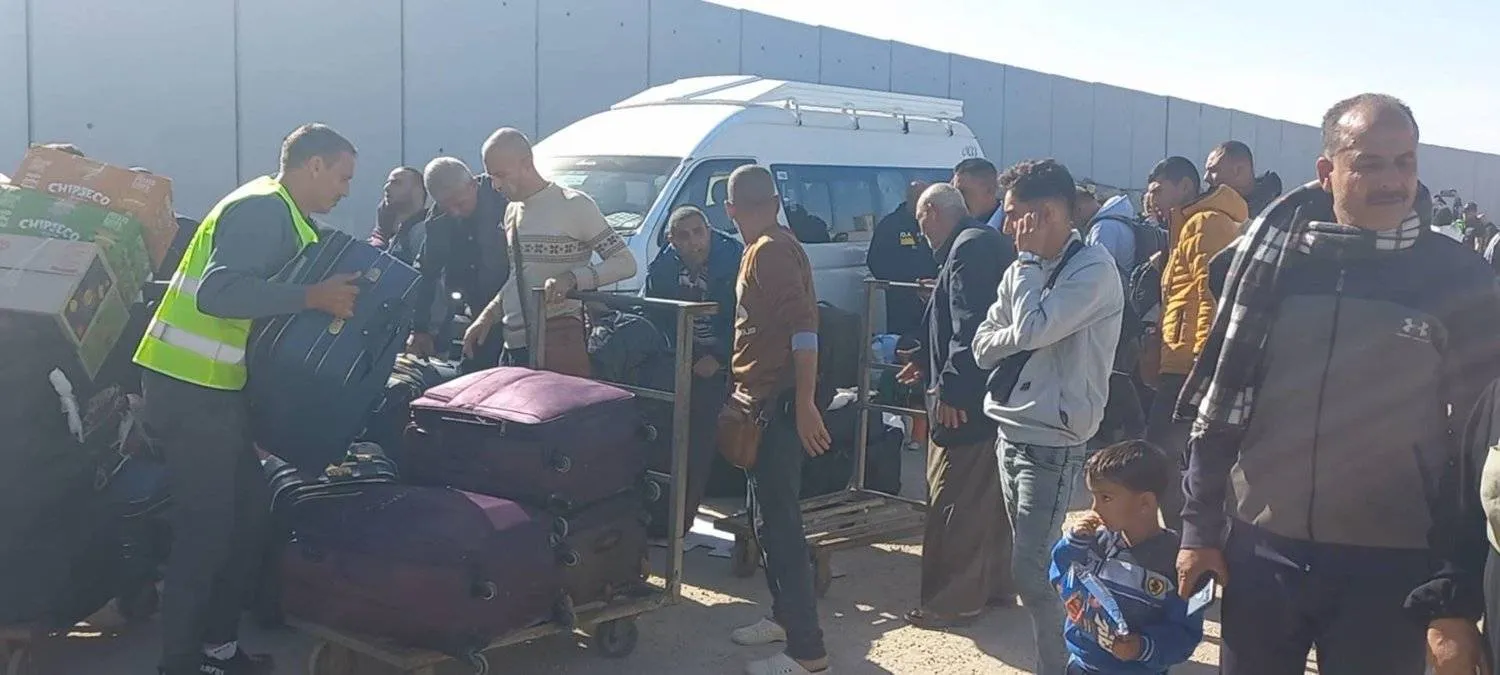Residents of Gaza rejoiced at being allowed to return to their homes in the coastal enclave as a ceasefire between Israel and Hamas took hold.
Speaking to Asharq Al-Awsat from the Rafah border crossing with Egypt, they said they were looking forward to the extension of the truce and return of peace.
Many of those who fled the Israeli strikes had sought the Rafah area and Egypt’s al-Arish city.
Ayman Hanieh, a father in his 40s had stayed in al-Arish with his relatives for around 50 days, said he was eager to return to Gaza to see his children.
He had left the enclave before the war erupted on October 7 to seek treatment for a stroke, which left him in a wheelchair. He was planning on returning home on October 8, but the conflict derailed his plan.
He remarked however, that he was unsure what awaits him when he returns, revealing that Israel had targeted his home. He declared though that he was determined to be reunited with his children, but will brace himself for the worst.
He spoke to Asharq Al-Awsat about the “unknown” that awaits them, tearfully expressing his fear about the fate of his relatives.
“Death in our nation is better than life outside of it,” Ayman added.
“I don’t know how I'll be able to arrange affairs when I return to Gaza. I don’t even know how I will get back there or reach my children,” he stated.
Atiyeh Abou Fadel, a man in his 30s, was waiting at the Rafah crossing to be allowed entry to return to his home in Khan Younis in southern Gaza. He had left the enclave three days before the war erupted.
“The situation in Gaza is very difficult; everyone knows that. However, despite this, we want to return to our homes and relatives,” he told Asharq Al-Awsat.
“Everyone is relieved with the ceasefire, but they don’t know what is in store for them,” he said.
He hoped that everyone “could enjoy peace and calm, away from wars, strikes, killing and destruction.”
He added that images of the victims that had emerged from Gaza continue to haunt him. “I don’t know if I will find my relatives and friends when I return,” he confided.
Umm Ayman, a woman in his 70s, spoke with heartache about the disaster. “I want to die in my country,” she declared.
“I’m afraid of returning to Gaza and not finding my family,” she said as she was overcome by tears.







